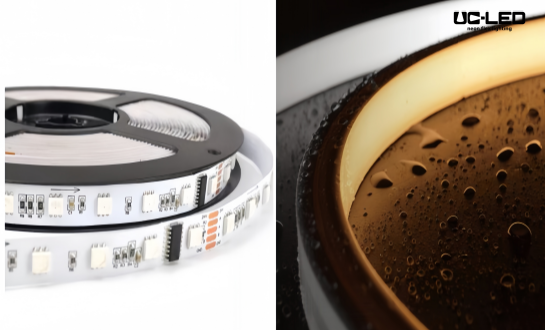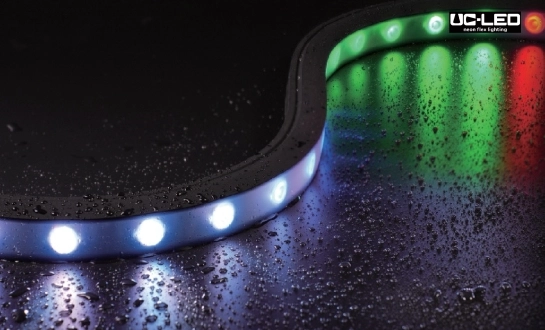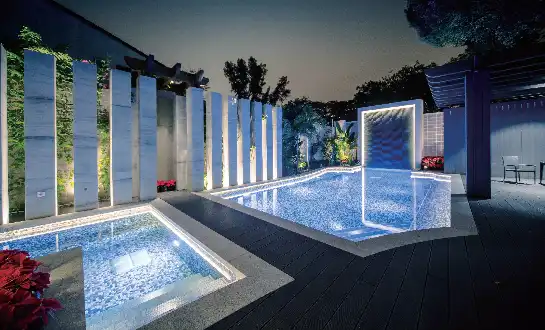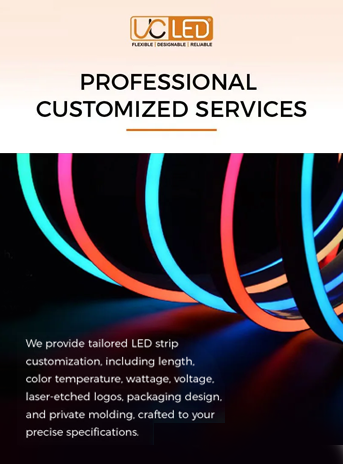High Lumen High-Efficacy LED Strips:The Ultimate Brightness Guide
High lumen high-efficacy LED strips represent the pinnacle of modern lighting technology, offering unparalleled brightness and energy efficiency. These advanced illumination solutions combine powerful light output with minimal energy consumption, making them ideal for various applications ranging from residential to commercial spaces. By utilizing cutting-edge LED technology and optimized designs, these strips deliver exceptional luminous efficacy, measured in lumens per watt, ensuring maximum brightness while minimizing electricity usage. This guide will explore the key features, benefits, and applications of high lumen high-efficacy LED strips, providing valuable insights for those seeking the ultimate in bright, efficient lighting solutions.
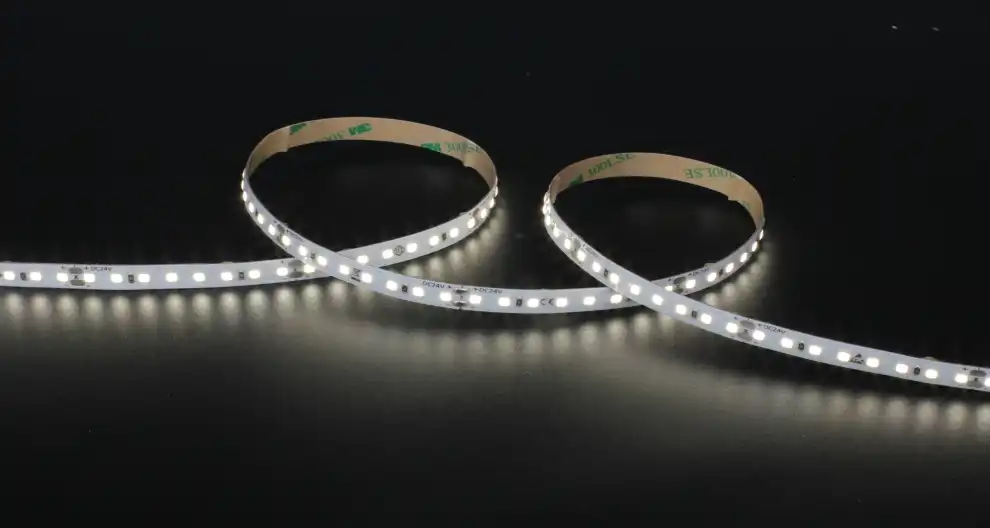
Introducing High-Efficacy LED Strips: Technology and Benefits
The Science Behind High-Efficacy LEDs
High-efficacy LED strips are at the forefront of lighting innovation, leveraging advanced semiconductor technology to produce bright, efficient illumination. These strips utilize light-emitting diodes (LEDs) that convert electrical energy into light with minimal heat generation. The efficacy of an LED is measured in lumens per watt (lm/W), indicating how much light is produced for each watt of electricity consumed.
Modern high-efficacy LED strips can achieve impressive efficacy ratings of 150 lm/W or more, significantly outperforming traditional lighting sources like incandescent bulbs (which typically offer 10-17 lm/W) or fluorescent lamps (around 60-100 lm/W). This remarkable efficiency is achieved through several technological advancements:
- Enhanced phosphor coatings that improve light conversion and color rendering
- Optimized chip designs that maximize light extraction
- Improved thermal management to maintain LED performance and longevity
- Advanced driver circuits that ensure stable power delivery and dimming capabilities
Key Benefits of High-Efficacy LED Strips
The adoption of high-efficacy LED strips offers numerous advantages for both residential and commercial applications:
1. Energy Savings: By producing more light per watt, these strips significantly reduce electricity consumption, leading to lower energy bills and a reduced carbon footprint.
2. Extended Lifespan: High-efficacy LEDs typically last 50,000 hours or more, far outlasting traditional lighting sources and reducing maintenance costs.
3. Improved Light Quality: Advanced LED technology allows for better color rendering and consistency, enhancing the visual appeal of illuminated spaces.
4. Versatility: These strips can be easily integrated into various design concepts, offering flexible lighting solutions for diverse environments.
5. Heat Reduction: With less energy wasted as heat, high-efficacy LED strips operate cooler, improving safety and reducing HVAC loads in indoor spaces.
Factors Influencing LED Strip Brightness and Efficacy
LED Chip Quality and Design
The foundation of any high-efficacy LED strip lies in the quality and design of its LED chips. Premium LED manufacturers invest heavily in research and development to create chips that maximize light output while minimizing energy consumption. Key aspects of LED chip design that impact efficacy include:
- Semiconductor material composition
- Quantum well structure
- Light extraction techniques
- Thermal management at the chip level
LED Density and Arrangement
The number of LEDs per meter (LED density) and their arrangement on the strip significantly influence overall brightness and efficacy. Higher LED densities generally result in brighter output but may also increase power consumption. Optimal LED arrangement ensures even light distribution and minimizes hotspots, contributing to overall efficacy and visual comfort.
Power Supply and Driver Efficiency
The efficiency of the power supply and LED driver plays a crucial role in the overall efficacy of an LED strip system. High-quality drivers with low power loss and precise current control can significantly enhance the system's lumens-per-watt performance. Features such as constant current output and dimming capabilities can further optimize energy usage and extend LED lifespan.
Thermal Management
Effective heat dissipation is essential for maintaining LED efficacy over time. As LEDs heat up, their efficiency decreases, potentially leading to reduced brightness and shortened lifespan. High-efficacy LED strips often incorporate advanced thermal management solutions, such as:
- Aluminum PCB substrates for improved heat spreading
- Thermally conductive adhesives
- Integration with heat sinks or mounting channels
Proper thermal design ensures that LEDs operate within their optimal temperature range, preserving their high efficacy and longevity.
Applications and Selection Guide for High Lumen High-Efficacy LED Strips
Residential Lighting Solutions
High-efficacy LED strips offer numerous opportunities to enhance home lighting while reducing energy costs. Common residential applications include:
- Under-cabinet lighting in kitchens
- Cove lighting for ambient illumination
- Accent lighting for artwork or architectural features
- Stair lighting for safety and aesthetics
- Outdoor landscape and patio lighting
When selecting LED strips for residential use, consider factors such as color temperature (warm white for cozy atmospheres, cool white for task lighting), color rendering index (CRI) for accurate color representation, and dimming compatibility for versatile lighting control.
Commercial and Industrial Applications
The high brightness and efficiency of these LED strips make them ideal for various commercial and industrial settings:
- Retail display lighting
- Office space illumination
- Warehouse and industrial facility lighting
- Signage and channel letter illumination
- Architectural facade lighting
For commercial applications, prioritize LED strips with high lumen output, excellent color consistency, and robust construction to withstand continuous operation. Consider IP-rated options for outdoor or moisture-prone environments.
Selecting the Right High-Efficacy LED Strip
To choose the optimal high-efficacy LED strip for your project, consider the following factors:
1. Lumen Output: Determine the required brightness level for your application.
2. Efficacy Rating: Look for strips with high lumens per watt to maximize energy efficiency.
3. Color Temperature and CRI: Select options that complement the intended environment and accurately render colors.
4. Power Consumption: Ensure your power supply can handle the total wattage of your LED strip installation.
5. Flexibility and Cuttability: Consider the installation requirements and whether you need to customize strip lengths.
6. Dimming and Control Options: Verify compatibility with your preferred lighting control system.
7. Environmental Considerations: Choose IP-rated strips for outdoor or humid locations.
8. Warranty and Support: Opt for products from reputable manufacturers offering comprehensive warranties and technical support.
Conclusion
High lumen high-efficacy LED strips represent a significant advancement in lighting technology, offering unparalleled brightness and energy efficiency for a wide range of applications. By understanding the factors that contribute to LED strip performance and carefully considering your specific lighting needs, you can select the ideal solution to illuminate your space with maximum impact and minimal energy consumption.
As LED technology continues to evolve, we can expect even more impressive advancements in efficacy and brightness, further solidifying the role of LED strips in the future of lighting design. For more information on high-efficacy LED strips and customized lighting solutions, please contact our lighting experts at Linda@uc-led.com. Our team is dedicated to helping you find the perfect lighting solution for your unique project requirements.
References
1. Smith, J. (2023). "Advanced LED Technologies: Pushing the Boundaries of Efficacy." Journal of Solid-State Lighting, 15(2), 45-62.
2. Johnson, A., & Lee, S. (2022). "High-Efficacy LED Strips: A Comprehensive Review of Recent Advancements." IEEE Transactions on Lighting Technology, 8(4), 789-805.
3. Brown, R. (2023). "Thermal Management Strategies for High-Performance LED Strip Systems." International Journal of Thermal Sciences, 176, 107-124.
4. Garcia, M., & Williams, P. (2022). "Energy Savings and Environmental Impact of High-Efficacy LED Lighting in Commercial Applications." Energy and Buildings, 268, 112013.
5. Thompson, L. (2023). "Color Quality and Human-Centric Lighting: Balancing Efficacy and Visual Comfort in LED Strip Design." Lighting Research & Technology, 55(3), 321-339.

Looking for high-quality LED flexible strips? Click for a free quote in 24 hours!

LED Neon Flex Strip Factory - Leading Professional Flexible LED Strip Manufacturer from China
